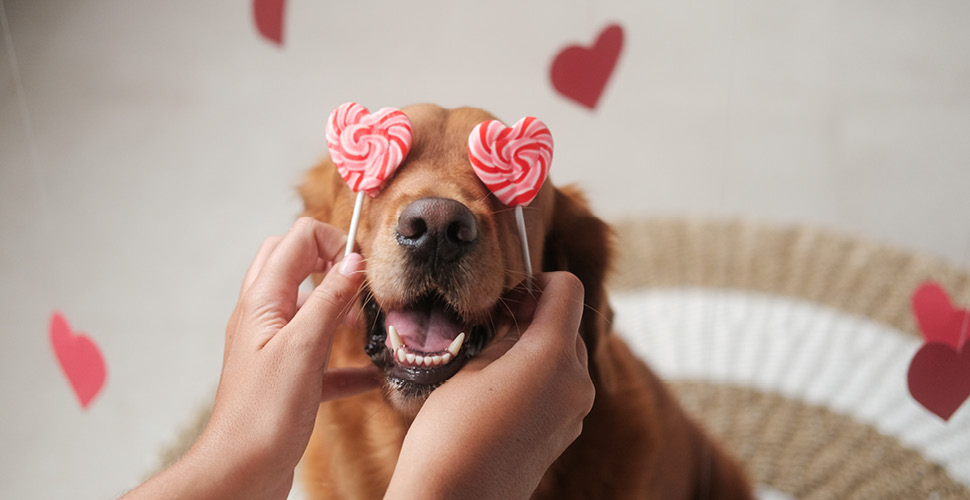Valentine’s Day is a time to celebrate love, and for many of us, that includes our pets! But while we’re indulging in sweet treats and beautiful flowers, our furry friends may face hidden dangers. From chocolate to candles, here’s what pet parents and pet care facilities need to watch out for this Valentine’s Day.
1. Chocolate: A Sweet but Serious Threat
Chocolate is one of the most well-known dangers for pets, especially dogs. It contains theobromine and caffeine, both of which are toxic to dogs and cats. The darker the chocolate, the more dangerous it is. Symptoms of chocolate poisoning include:
- Vomiting and diarrhea
- Increased heart rate
- Tremors or seizures
- Restlessness or hyperactivity
If your pet ingests chocolate, contact your veterinarian or a pet poison hotline immediately. To avoid accidents, store chocolate gifts and desserts out of reach, and remind guests to keep their treats away from curious noses.
2. Xylitol: A Hidden Hazard in Candy
Xylitol is a common sugar substitute found in sugar-free gum, candy, and even some baked goods. While safe for humans, it can cause a dangerous drop in blood sugar and liver failure in dogs. Even small amounts can be fatal. Symptoms of xylitol poisoning include:
- Weakness or lethargy
- Vomiting
- Seizures
Keep all sugar-free candies and gum in closed containers and out of your pet’s reach.
3. Flowers & Plants: Pretty but Poisonous
Roses may be the classic Valentine’s Day flower, but other popular flowers and plants can be toxic to pets. Lilies, often found in mixed bouquets, are extremely dangerous for cats, causing kidney failure if ingested. Other toxic plants include:
- Tulips
- Daffodils
- Baby’s breath
If you receive a floral arrangement, check that it’s pet-safe before placing it where your pet might sniff or chew.
4. Candles & Decorations: Fire and Choking Risks
Candles create a romantic atmosphere, but pets can easily knock them over, leading to burns or house fires. Battery-operated candles are a safer alternative. Decorations like ribbons, balloons, and confetti can also pose choking or intestinal blockage hazards if swallowed. Keep them out of reach and monitor your pet around holiday decor.
5. Alcohol & Fancy Drinks: Not for Pets!
Many Valentine’s Day celebrations include wine, cocktails, or champagne, but alcohol is toxic to pets. Even small amounts can cause:
- Vomiting
- Diarrhea
- Difficulty breathing
- Seizures
Be mindful of where you leave your drinks and never offer pets alcohol, even as a joke.
6. Stuffed Animals & Toys: Check for Choking Hazards
Stuffed animals and heart-shaped toys are fun gifts, but if they have small parts, buttons, or beads, pets can accidentally swallow them, leading to choking or intestinal blockages. If gifting a stuffed animal to your pet, ensure it’s pet-safe and doesn’t contain small, detachable pieces.
Keeping Pets Safe This Valentine’s Day
While Valentine’s Day comes with hidden risks, a little extra awareness can keep your pets safe and happy. Here are a few final tips:
- Store chocolates, candies, and baked goods in sealed containers and out of reach.
- Check flower arrangements before bringing them into a pet-friendly space.
- Use battery-operated candles instead of open flames.
- Monitor pets around ribbons, balloons, and small toys.
- Keep alcoholic beverages and sugary drinks away from pets.
This Valentine’s Day, show your love by keeping your pets safe from common holiday hazards. A cozy snuggle session, a special pet-safe treat, or a fun new toy (designed for pets!) can be just as sweet as any box of chocolates.
Have a safe and love-filled Valentine’s Day with your furry companions!


